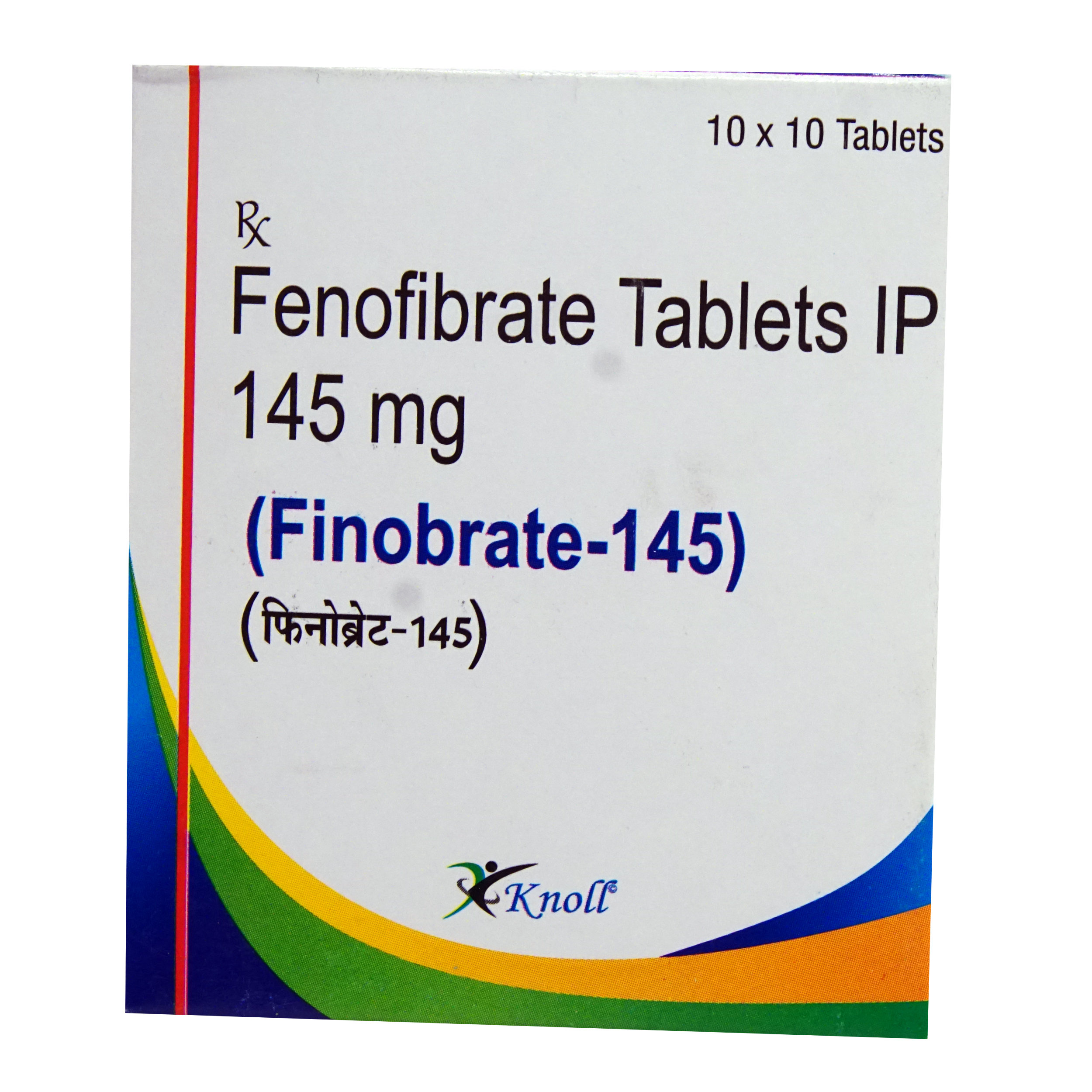Fenolip 145 Tablet 10's

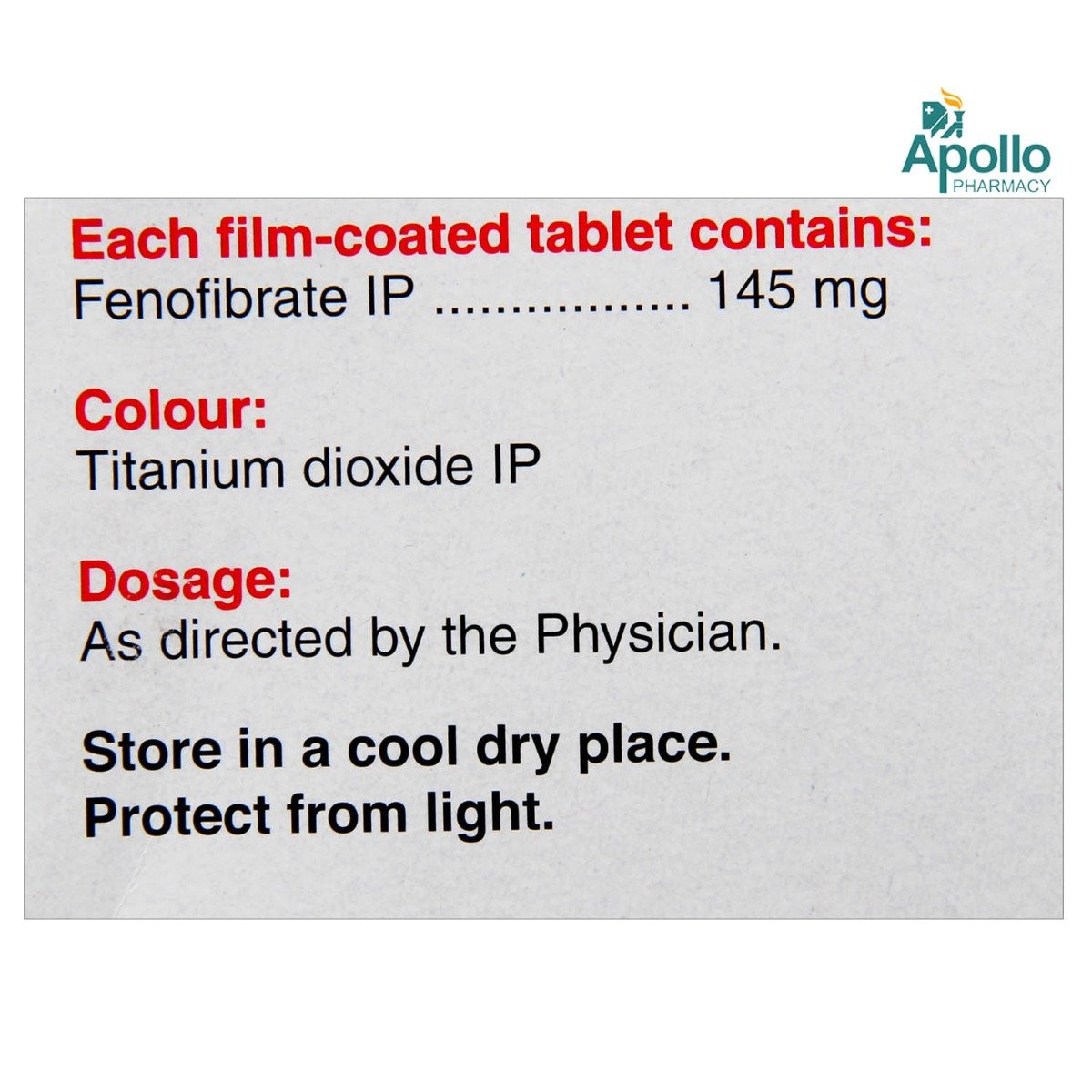
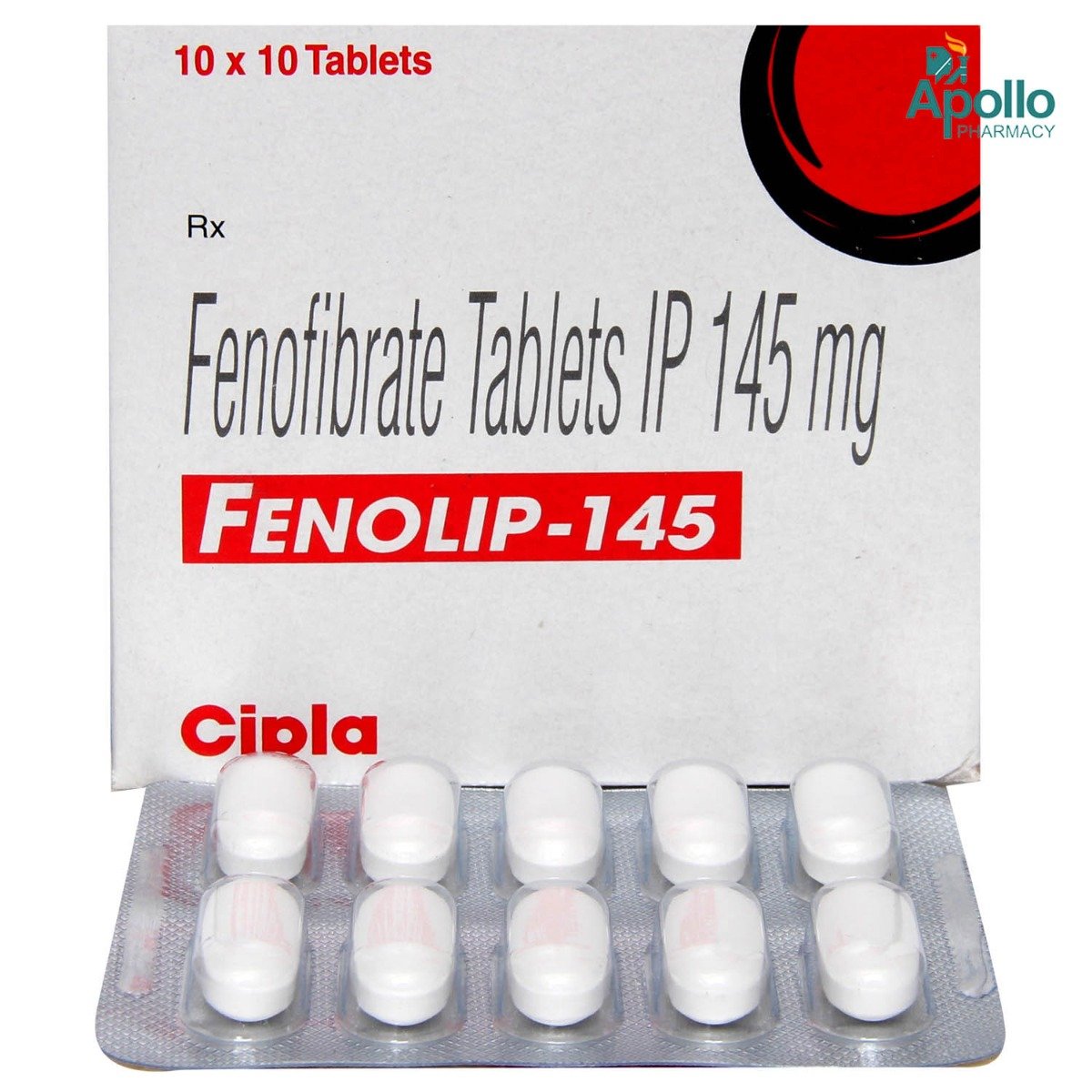
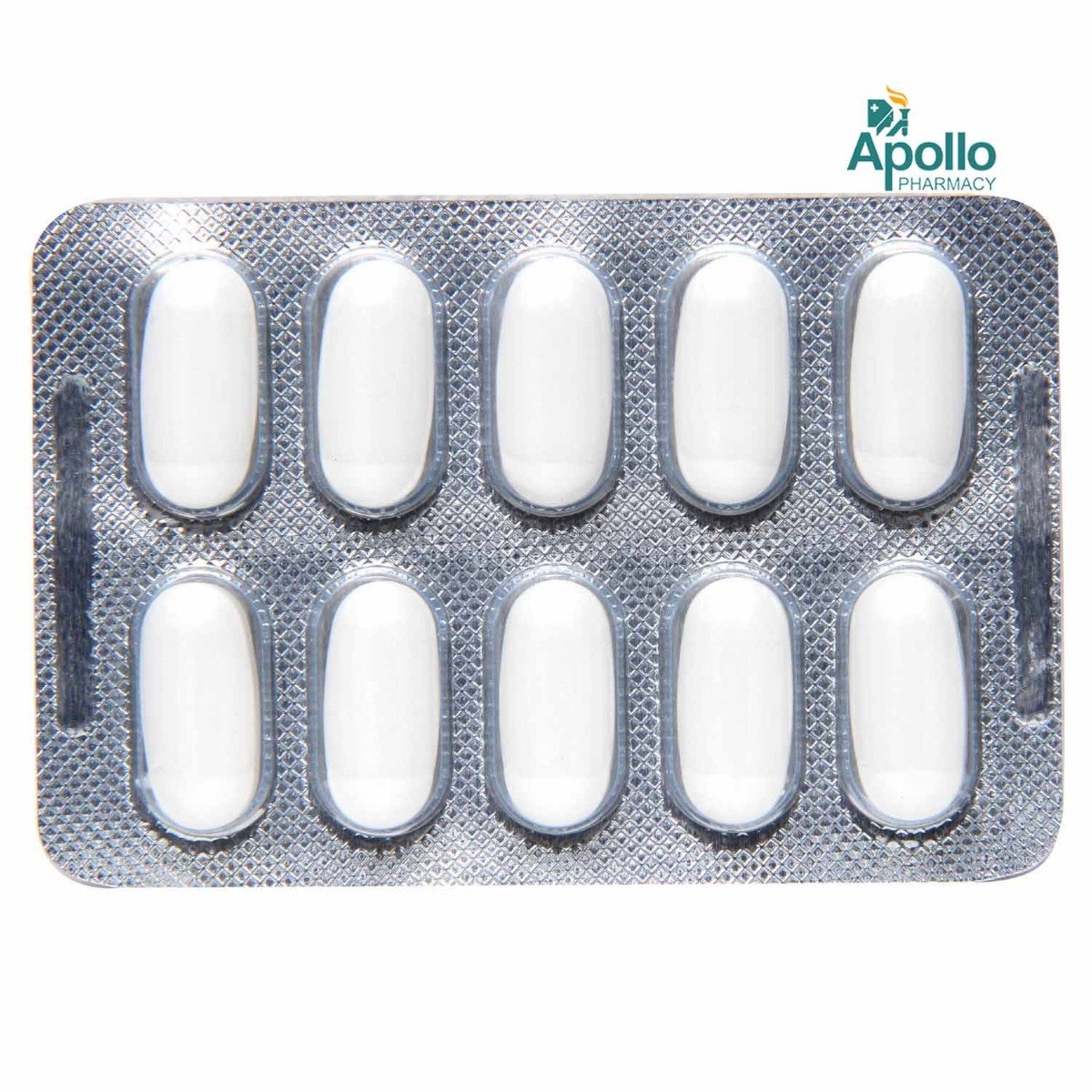

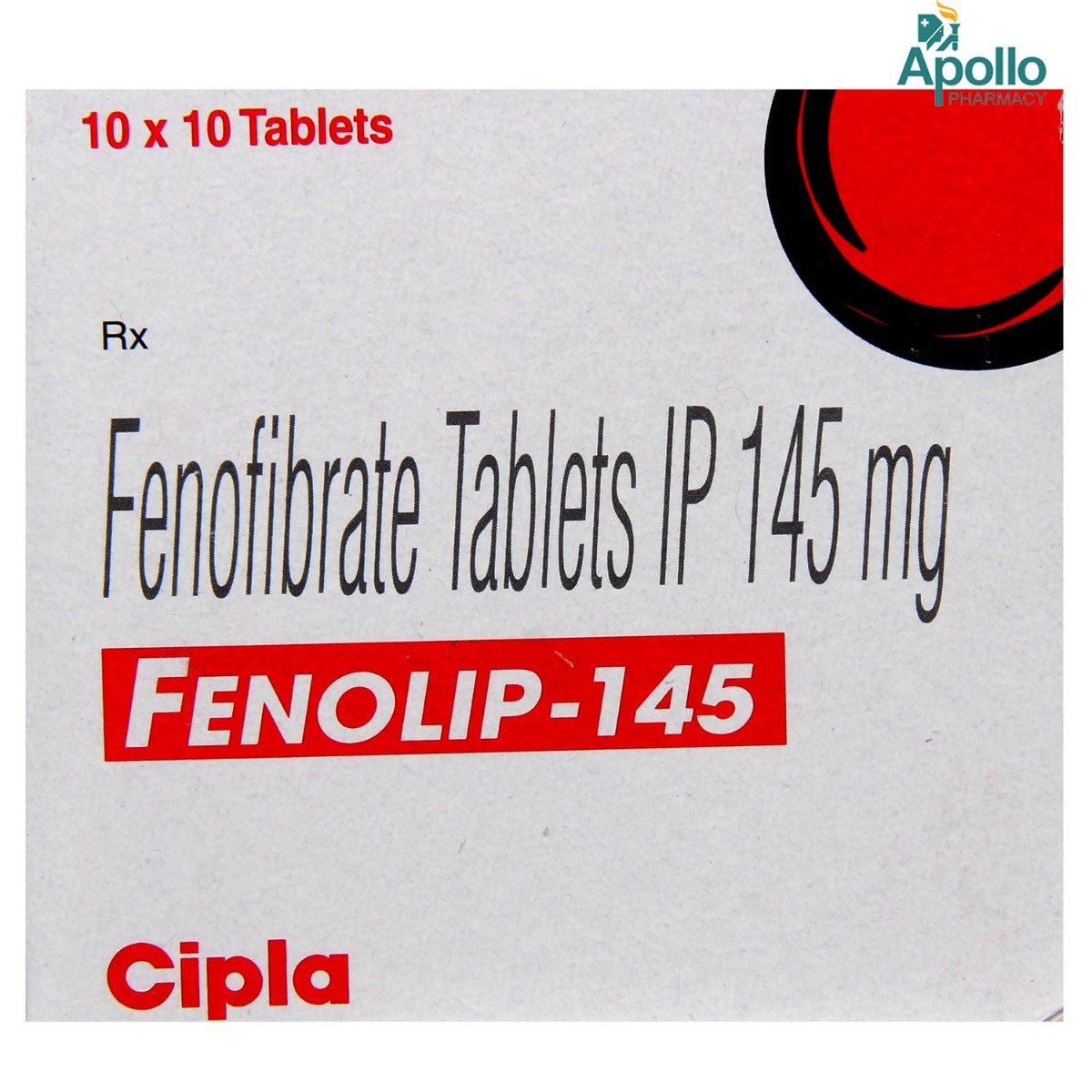



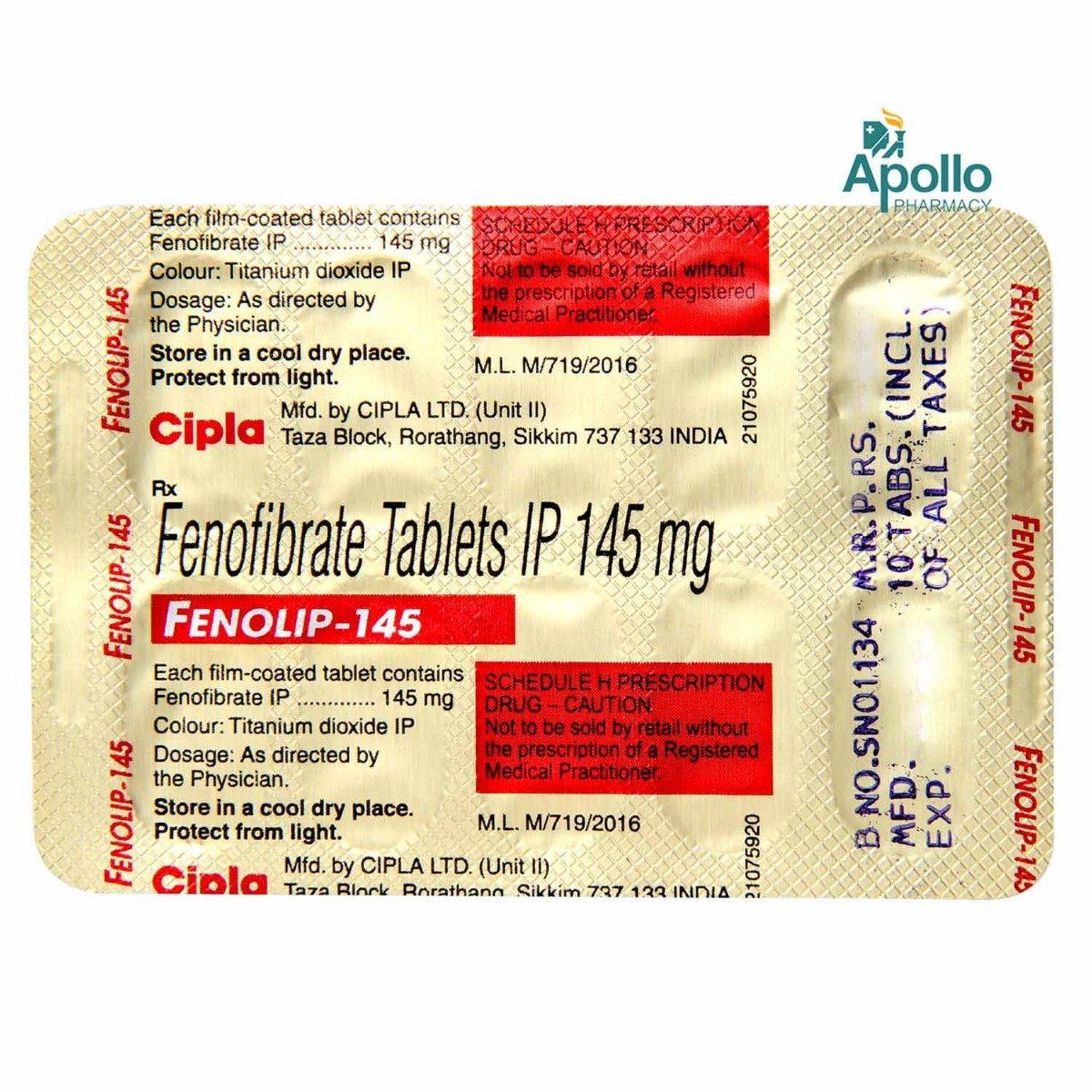
MRP ₹266.5
(Inclusive of all Taxes)
₹40.0 Cashback (15%)
Provide Delivery Location
Online payment accepted
 Prescription drug
Prescription drugWhats That
Composition :
Manufacturer/Marketer :
Consume Type :
Expires on or after :
Return Policy :
About Fenolip 145 Tablet
Fenolip 145 Tablet belongs to a group of medications called 'fibric acid derivatives or 'fibrates' primarily used to treat raised or increased cholesterol levels or fat/oils. Hyperlipidemia is a condition in which there is a high level of low-density lipoproteins (LDL) or bad cholesterol and a decreased level of high-density lipoprotein (HDL) or good cholesterol. Increased level of bad cholesterol leads to a high risk of heart attack and stroke in future, especially for heart disease patients.
Fenolip 145 Tablet contains 'fenofibrate', which works by increasing the natural substance that breaks down fats in the bloodstream, thereby increasing its utilization and removal. As a result, Fenolip 145 Tablet decreases harmful cholesterol like LDL (bad cholesterol) triglycerides (TG) and increases levels of HDL (good cholesterol).
Always take the Fenolip 145 Tablet exactly as prescribed by your doctor. Some people may experience nausea, chest pain, vomiting, diarrhoea, drowsiness, muscle pain, redness/swelling in the legs and increased liver enzymes. Most of these side effects of Fenolip 145 Tablet do not require medical attention and gradually resolve over time. However, if the side effects persist or worsen, please consult your doctor.
To treat your condition effectually, continue using Fenolip 145 Tablet for as long as your doctor has prescribed it. Do not use Fenolip 145 Tablet without a doctor's advice if you have a skin reaction or irritation to any medicine. Consult your doctor before using Fenolip 145 Tablet if you are pregnant or breastfeeding. Fenolip 145 Tablet is not recommended for children under the age of 18, as the safety and effectiveness were not established. Avoiding alcohol is recommended to rule out any possibility of side effects.
Uses of Fenolip 145 Tablet
Directions for Use
Key Benefits
Fenolip 145 Tablet contains 'fenofibrate', which is used along with a proper diet to help lower 'bad cholesterol' (LDL, TG -triglycerides) and raise 'good cholesterol' (HDL) in the blood. Fenolip 145 Tablet is also used with statins to lower raised cholesterol. Besides this, Fenolip 145 Tablet also helps in the treatment of raised cholesterol in diabetes and high blood pressure patients as well.
Storage
- Drink water or other clear fluids.
- To prevent worsening of pain, limit intake of tea, coffee, or alcohol.
- Include bland foods like rice, toast, crackers, and rice in your diet.
- Avoid lying down immediately after eating as it may cause indigestion or heartburn.
- Avoid acidic and spicy food as it may cause indigestion.
- Hydrate your body: Drink enough water to prevent dehydration and headaches.
- Calm Your Mind: Deep breathing and meditation can help you relax and relieve stress.
- Rest and Recharge: Sleep for 7-8 hours to reduce headache triggers.
- Take rest: lie down in a quiet, dark environment.
- Cold or warm compresses can help reduce tension.
- Stay Upright: Maintain good posture to keep symptoms from getting worse.
- To treat headaches naturally, try acupuncture or massage therapy.
- Over-the-counter pain relievers include acetaminophen and ibuprofen.
- Prescription Assistance: Speak with your doctor about more substantial drug alternatives.
- Severe Headaches: Seek emergency medical assistance for sudden, severe headaches.
- Frequent Headaches: If you get reoccurring headaches, consult your doctor.
- Headaches with Symptoms: Seek medical attention if your headaches include fever, disorientation, or weakness.
- Inform your doctor about the nausea and discuss possible alternatives to the medication or adjustments to the dosage.
- Divide your daily food intake into smaller, more frequent meals to reduce nausea.
- Opt for bland, easily digestible foods like crackers, toast, plain rice, bananas, and applesauce.
- Avoid certain foods that can trigger nausea, such as fatty, greasy, spicy, and smelly foods.
- Drink plenty of fluids, such as water, clear broth, or electrolyte-rich beverages like coconut water or sports drinks.
- Use ginger (tea, ale, or candies) to help relieve nausea.
- Get adequate rest and also avoid strenuous activities that can worsen nausea.
- Talk to your doctor about taking anti-nausea medication if your nausea is severe.
- Record when your nausea occurs, what triggers it, and what provides relief to help you identify patterns and manage your symptoms more effectively.
- Preventing Vomiting (Before it Happens)
- Take medication exactly as prescribed by your doctor. This can help minimize side effects, including vomiting.
- Having a small meal before taking your medication can help reduce nausea and vomiting.
- Talk to your doctor about taking anti-nausea medication along with your prescribed medication.
- Managing Vomiting (If it Happens)
- Try taking ginger in the form of tea, ale, or candy to help alleviate nausea and vomiting.
- What to Do if Vomiting Persists
- Consult your doctor if vomiting continues or worsens, consult the doctor for guidance on adjusting your medication or additional treatment.
- Inform Your Doctor: Notify your doctor immediately about your diarrhoea symptoms. This allows them to adjust your medication or provide guidance on managing side effects.
- Stay Hydrated: Drink plenty of fluids to replace lost water and electrolytes. Choose water, clear broth, and electrolyte-rich drinks. Avoid carbonated or caffeinated beverages to effectively rehydrate your body.
- Follow a Bland Diet: Eat easy-to-digest foods to help firm up your stool and settle your stomach. Try incorporating bananas, rice, applesauce, toast, plain crackers, and boiled vegetables into your diet.
- Avoid Trigger Foods: Steer clear of foods that can worsen diarrhoea, such as spicy, fatty, or greasy foods, high-fibre foods, and dairy products (especially if you're lactose intolerant).
- Practice Good Hygiene: Maintain good hygiene to prevent the spread of infection. To stay healthy, wash your hands frequently, clean and disinfect surfaces regularly, and avoid exchanging personal belongings with others.
- Take Anti-Diarrheal Medications: If your doctor advises, anti-diarrheal medications such as loperamide might help manage diarrhoea symptoms. Always follow your doctor's directions.
- Keep track of your diarrhoea symptoms. If they don't get better or worse or are accompanied by severe stomach pain, blood, or dehydration signs (like extreme thirst or dark urine), seek medical help.
- Tell your doctor about your GAS symptoms. They may change your medication regimen or prescribe additional drugs to help you manage them.
- To manage GAS symptoms, eat a balanced diet of fibre, vegetables, and fruits.
- Drink enough water throughout the day to avoid constipation and treat GAS symptoms.
- Regular exercise like yoga and walking may help stimulate digestion and alleviate GAS symptoms.
- Take probiotics only if your doctor advises, as they may help alleviate GAS symptoms by promoting gut health.
- Take medication for GAS symptoms only if your doctor advises, as certain medications can interact with your existing prescriptions or worsen symptoms.
- If symptoms persist, worsen, or are accompanied by severe abdominal pain, vomiting, or bleeding, seek immediate medical attention.
- High levels of liver enzymes need immediate medical attention.
- Watch your diet and consume low-fat foods, like green leafy vegetables, fish, whole grains, nuts, etc.
- Regularly do strengthening exercises to control your cholesterol levels.
- Avoid drinking alcohol as it can affect your liver.
- Focus on losing weight as it can help control cholesterol and maintain liver enzymes.
- Practice yoga and meditation to improve liver functioning and overall health.
Drug Warnings
Before taking the Fenolip 145 Tablet , let your doctor know about all your allergic or hypersensitivity reactions to medicines or food. Inform your doctor if you are suffering from bladder problems, gallstones, liver disease, kidney disease, or muscle problems (like muscle pain, myopathy, or rhabdomyolysis). If you are pregnant or breastfeeding, please tell your doctor so that your doctor will weigh the benefits and any potential risks before prescribing it to you. Keep your doctor informed about your health condition and all the medicines you are taking before taking Fenolip 145 Tablet to rule out any side effects. Avoiding alcohol is recommended to rule out any possibility of side effects like dizziness. Fenolip 145 Tablet is not recommended in children below 18 years of age.
Drug-Drug Interactions
Drug-Drug Interactions
Login/Sign Up
Taking Fenolip 145 Tablet with Pitavastatin can increase the risk of muscle problems like liver damage and rhabdomyolysis (the breakdown of skeletal muscle tissue).
How to manage the interaction:
Although there is a possible interaction between Pitavastatin and Fenolip 145 Tablet, you can take these medicines together if prescribed by a doctor. However, if you experience unexpected bruising or bleeding, skin rash, itching, exhaustion, nausea, vomiting, yellowing of the skin or eyes, unexplained muscular pain, tenderness, or weakness, fever, dark urine, chills, joint pain, or swelling, consult a doctor. Do not discontinue any medications without consulting a doctor.
When Fenolip 145 Tablet is used with cerivastatin, the risk of adverse effects such as liver damage and rhabdomyolysis, an uncommon but serious illness involving the breakdown of skeletal muscle tissue, increases. Rhabdomyolysis can cause kidney damage.
How to manage the interaction:
Although taking Fenolip 145 Tablet and Cerivastatin together can cause an interaction, it can be taken if a doctor has suggested it. If you experience unexplained muscular pain, soreness, or weakness while taking these drugs, inform a doctor immediately, especially if these symptoms are accompanied by fever or dark-colored urine. Furthermore, if you develop a fever, chills, joint pain or swelling, unusual bleeding or bruising, skin rash, itching, loss of appetite, fatigue, nausea, vomiting, dark-colored urine, and/or yellowing of the skin or eyes, consult a doctor immediately. Do not stop using any medications without a doctor's advice.
Mipomersen may cause liver problems and using it with Fenolip 145 Tablet may increase that risk.
How to manage the interaction:
There may be a possibility of interaction between Fenolip 145 Tablet and Mipomersen, but it can be taken if prescribed by a doctor. If you have any of these symptoms, it's important to contact a doctor right away: liver damage, fever, chills, joint pain, swelling, bruising, skin rash, itching, loss of appetite, fatigue, nausea, vomiting, abdominal pain, dark urine, or bleeding. Do not stop using any medications without a doctor's advice.
When atorvastatin is used with Fenolip 145 Tablet, it increases the risk of side effects such as liver damage, rhabdomyolosis (uncommon illness characterized by the breakdown of skeletal muscle tissue).
How to manage the interaction:
Although taking Fenolip 145 Tablet and atorvastatin together can cause an interaction, it can be taken if a doctor has suggested it. However, if you experience muscle pain, tenderness, or weakness, accompanied by fever or dark colored urine, chills, joint pain or swelling, unusual bleeding or bruising, skin rash, itching, loss of appetite, fatigue, nausea, vomiting, dark colored urine, light colored stools, and/or yellowing of the skin or eyes, you should consult the doctor. Do not stop using any medications without talking to a doctor.
When Fenolip 145 Tablet is used with pravastatin, it increases the chance of adverse effects such as liver damage and rhabdomyolysis, an uncommon but deadly illness characterised by the destruction of skeletal muscle tissue. Rhabdomyolysis can cause kidney damage.
How to manage the interaction:
Co-administration of Fenolip 145 Tablet with Pravastatin can result in an interaction, but it can be taken if a doctor has advised it. Inform a doctor immediately, if you have unexplained muscular pain, soreness, or weakness while taking these medications, especially if these symptoms are accompanied by fever or dark-colored urine. Furthermore, if you develop a fever, chills, joint pain or swelling, unusual bleeding or bruising, skin rash, itching, loss of appetite, fatigue, nausea, vomiting, dark-colored urine, or yellowing of the skin or eyes, consult the doctor immediately.
The combined use of Nicotine and Fenolip 145 Tablet can increase the blood levels and effects of nicotine. This can increase the risk or severity of side effects.
How to manage the interaction:
Co-administration of Nicotine and Fenolip 145 Tablet can lead to an interaction, it can be taken if advised by a doctor. If you experience any symptoms like irritation and burning sensation in the mouth and throat, increased salivation, nausea, abdominal pain, vomiting and diarrhea, contact a doctor immediately. Do not discontinue any medications without consulting the doctor.
Co- administration of Fenolip 145 Tablet with teriflunomide can cause liver issues and taking it with other medications that might harm the liver, such as Fenolip 145 Tablet, can enhance the risk.
How to manage the interaction:
There may be a possibility of interaction between Teriflunomide and Fenolip 145 Tablet, but it can be taken if prescribed by a doctor. However, if you have a fever, chills, joint pain or swelling, unusual bleeding or bruising, skin rash, itching, loss of appetite, fatigue, nausea, vomiting, abdominal pain, dark-colored urine, light-colored stools, and/or yellowing of the skin or eyes, consult the doctor immediately. Do not stop using any medications without a doctor's advice.
Taking Warfarin together with Fenolip 145 Tablet can increase the risk of bleeding.
How to manage the interaction:
Although taking Fenolip 145 Tablet and Warfarin together can result in an interaction, they can be taken together if prescribed by a doctor. However, if you experience unusual bleeding, bruising, vomiting, blood in your urine or stools, headache, dizziness, or weakness consult a doctor immediately. Do not stop using any medications without consulting a doctor.
The use of Fenolip 145 Tablet and simvastatin can increase the risk of a rare condition called rhabdomyolysis (breakdown of skeletal muscle tissue), rhabdomyolysis can cause kidney damage. If you are elderly or have preexisting kidney disease, the risk may increase.
How to manage the interaction:
Co-administration of Fenolip 145 Tablet and simvastatin can lead to an interaction, it can be taken if advised by a doctor. However, if you experience any symptoms like muscle pain, tenderness, weakness, fever, or dark-colored urine, consult the doctor immediately. Do not stop using any medications without a doctor's advice.
Coadministration of Fenolip 145 Tablet with Atorvastatin can raise the chance of side effects (liver injury and rhabdomyolysis - an uncommon but serious illness that causes the breakdown of skeletal muscle tissue. Rhabdomyolysis occasionally results in kidney injury).
How to manage the interaction:
Although taking Fenolip 145 Tablet and atorvastatin together can cause an interaction, it can be taken if a doctor has suggested it. However, if you experience muscle pain, tenderness, or weakness, accompanied by fever or dark colored urine, chills, joint pain or swelling, unusual bleeding or bruising, skin rash, itching, loss of appetite, fatigue, nausea, vomiting, dark colored urine, light colored stools, and/or yellowing of the skin or eyes, you should consult the doctor. Do not stop using any medications without talking to a doctor.
Drug-Food Interactions
Drug-Food Interactions
Login/Sign Up
Diet & Lifestyle Advise
- Eating a proper diet (such as a low-cholesterol/low-fat diet) and other lifestyle changes that may help this medication work better include exercising, losing weight if overweight and stopping smoking.
- It is best to limit or avoid alcoholic drinks while you are taking this medicine.
- Using this medicine with alcohol can lead to additive side effects such as increased drowsiness. Do not drive or operate machinery if you are drinking alcohol-containing beverages.
- Contact your healthcare provider immediately if you notice slurred speech, confusion, severe weakness or difficulty breathing.
Side Effects of Fenolip 145 Tablet
- Muscle pain
- Stuffy/runny nose
- Headache
- Joint pain
- Increased liver enzymes
Habit Forming
Therapeutic Class
All Substitutes & Brand Comparisons
RX
Fenofibron 145 Tablet 10's
Steris Healthcare
₹94.5
(₹8.51 per unit)
64% CHEAPERRX
Out of StockFenotor Tablet 10's
Prevento Pharma
₹103
(₹9.06 per unit)
62% CHEAPERRX
Out of StockFibomine 145mg Tablet
₹103
(₹9.27 per unit)
61% CHEAPER
Product Substitutes
Author Details
We provide you with authentic, trustworthy and relevant information
Drug-Diseases Interactions
Drug-Diseases Interactions
Login/Sign Up
FAQs
Fenolip 145 Tablet contains 'fenofibrate', which works by increasing the natural substance that breaks down fats in the bloodstream, thereby increasing its utilization and removal. As a result, Fenolip 145 Tablet decreases harmful cholesterol like LDL (bad cholesterol) and triglycerides (TG) and increases levels of HDL (good cholesterol).
You should not take Fenolip 145 Tablet if you are allergic to fibric acid derivative or Fenolip 145 Tablet , have a severe renal impairment (including dialysis patient), have active liver disease, gallbladder disease (gallstone) or are a nursing mother.
Increased liver enzymes (like liver function tests - LFTs), rhinitis, stuffy/runny nose, nausea, indigestion, headache and back pain are some common side effects that may occur in some cases.
No, Fenolip 145 Tablet does not reduce the risk of having heart problems in patients with type 2 diabetes.
Long-term complications of Fenolip 145 Tablet are muscle problems (like unexplained muscle pain) and liver problems (with increased liver enzymes). So, if you experience these symptoms, please consult a doctor.
Fenolip 145 Tablet raises the risk of muscle pain and a serious muscle problem called rhabdomyolysis. The risk is higher if you take the drug along with statins.
It is completely fine to use oral contraceptives with Fenolip 145 Tablet as no such interactions have been found. Consult your doctor for further advice.
Drug-Drug Interactions Checker List
- WARFARIN
- COLCHICINE
- CLOFIBRATE
- GEMFIBROZIL
- EZETIMIBE
Special Advise
- Cholelithiasis can occur with the use of Fenolip 145 Tablet , so discontinue if any gallstones are detected.
- Breast-feeding is not recommended while using this drug and for five days after stopping the medication. Consult your doctor before breastfeeding.
- If you are already taking any blood thinner, regular monitoring of bleeding time should be done.
- Regular liver function tests (LFT) and kidney function tests (KFT) are suggested if you are taking Fenolip 145 Tablet for a prolonged time.
Disease/Condition Glossary
Hyperlipidemia/High cholesterol: When the concentration of cholesterol (like lipids/oil/fats) in your blood is too high, this condition is called hyperlipidemia. Lipids are made naturally in our bodies and also taken from external foods. The liver breaks down these fats for further use. If the levels of lipids are too high, the excess fat is deposited onto the walls of the heart's blood vessels of the heart, which can lead to plaque formation within the lining of arteries, leading to clogged arteries. These clogged arteries can increase the risk of stroke and heart attack.

Have a query?
Buy best Cardiology products by
Torrent Pharmaceuticals Ltd
Sun Pharmaceutical Industries Ltd
Lupin Ltd
Intas Pharmaceuticals Ltd
Cipla Ltd
Micro Labs Ltd
Macleods Pharmaceuticals Ltd
Abbott India Ltd
Ajanta Pharma Ltd
Ipca Laboratories Ltd
Eris Life Sciences Ltd
Mankind Pharma Pvt Ltd
Lloyd Healthcare Pvt Ltd
Dr Reddy's Laboratories Ltd
Glenmark Pharmaceuticals Ltd
Emcure Pharmaceuticals Ltd
Alembic Pharmaceuticals Ltd
Alkem Laboratories Ltd
East West Pharma India Pvt Ltd
USV Pvt Ltd
Zydus Healthcare Ltd
Aristo Pharmaceuticals Pvt Ltd
Elbrit Life Sciences Pvt Ltd
J B Chemicals & Pharmaceuticals Ltd
Zydus Cadila
Akumentis Healthcare Ltd
Alteus Biogenics Pvt Ltd
Hbc Life Sciences Pvt Ltd
Fusion Health Care Pvt Ltd
Troikaa Pharmaceuticals Ltd
La Renon Healthcare Pvt Ltd
Corona Remedies Pvt Ltd
Jubilant Lifesciences Ltd
Medley Pharmaceuticals Ltd
Knoll Healthcare Pvt Ltd
Msn Laboratories Pvt Ltd
Zuventus Healthcare Ltd
Cadila Pharmaceuticals Ltd
Blue Cross Laboratories Pvt Ltd
Lividus Pharmaceuticals Pvt Ltd
Morepen Laboratories Ltd
Ranmarc Labs
Shrrishti Health Care Products Pvt Ltd
Sanofi India Ltd
Steris Healthcare
Elder Pharmaceuticals Ltd
Primus Remedies Pvt Ltd
Unison Pharmaceuticals Pvt Ltd
Eswar Therapeutics Pvt Ltd
Knoll Pharmaceuticals Ltd
Tas Med India Pvt Ltd
Systopic Laboratories Pvt Ltd
Indiabulls Pharmaceuticals Pvt Ltd
Leeford Healthcare Ltd
Sinsan Pharmaceuticals Pvt Ltd
Biochem Pharmaceutical Industries Ltd
Cadila Healthcare Ltd
Azkka Pharmaceuticals Pvt Ltd
Nirvana India Pvt Ltd
Orsim Pharma
Prevego Healthcare & Research Pvt Ltd
Econ Healthcare
Elinor Pharmaceuticals (P) Ltd
FDC Ltd
Sunij Pharma Pvt Ltd
Nicholas Piramal India Ltd
Astra Zeneca Pharma India Ltd
Pfizer Ltd
Lia Life Sciences Pvt Ltd
Shine Pharmaceuticals Ltd
Elicad Pharmaceuticals Pvt Ltd
Indoco Remedies Ltd
Proqol Health Care Pvt Ltd
Vasu Organics Pvt Ltd
Biocon Ltd
Opsis Care Lifesciences Pvt Ltd
Johnlee Pharmaceuticals Pvt Ltd
Merck Ltd
Wockhardt Ltd
Auspharma Pvt Ltd
Ergos Life Sciences Pvt Ltd
Lakshya Life Sciences Pvt Ltd
Ordain Health Care Global Pvt Ltd
Pficus De Med Pvt Ltd
ALICAN PHARMACEUTICAL PVT LTD
RPG Life Sciences Ltd
Glynis Pharmaceuticals Pvt Ltd
Orris Pharmaceuticals
Samarth Life Sciences Pvt Ltd
Aprica Pharmaceuticals Pvt Ltd
Aretaeus Pharmaceuticals Pvt Ltd
Koye Pharmaceuticals Pvt Ltd
Neocardiab Care
Retra Life Science Pvt Ltd
Alniche Life Sciences Pvt Ltd
Alvio Pharmaceuticals Pvt Ltd
Arkas Pharma Pvt Ltd
Atos Lifesciences Pvt Ltd
Divine Savior Pvt Ltd
Metalis Lifesciences Pvt Ltd
Alcohol
Safe if prescribed
Avoid drinking alcohol as it can raise liver enzymes and liver functions test (LFT), thereby damaging your liver.
Pregnancy
Consult your doctor
Fenolip 145 Tablet is a Category C risk medicine; talk with your doctor if you’re pregnant or planning to become pregnant. Fenolip 145 Tablet should be used only if the potential benefit justifies the potential risk.
Breast Feeding
Consult your doctor
Fenolip 145 Tablet should not be used in nursing mothers unless clearly necessary. So, inform your doctor if you are a nursing mother. Your doctor will weigh the benefits and potential risks before prescribing Fenolip 145 Tablet .
Driving
Safe if prescribed
Fenolip 145 Tablet does not impact your ability to drive or operate machinery.
Liver
Consult your doctor
Caution is advised. If you have/had liver problems, your doctor may need to monitor your liver function.
Kidney
Consult your doctor
Fenolip 145 Tablet should not be used in severe kidney problems, including in patients on dialysis. However, mild to moderate kidney patients can use Fenolip 145 Tablet if prescribed by the doctor.
Children
Safe if prescribed
Fenolip 145 Tablet is not recommended for children under the age of 18.
Recommended for a 30-day course: 3 Strips




